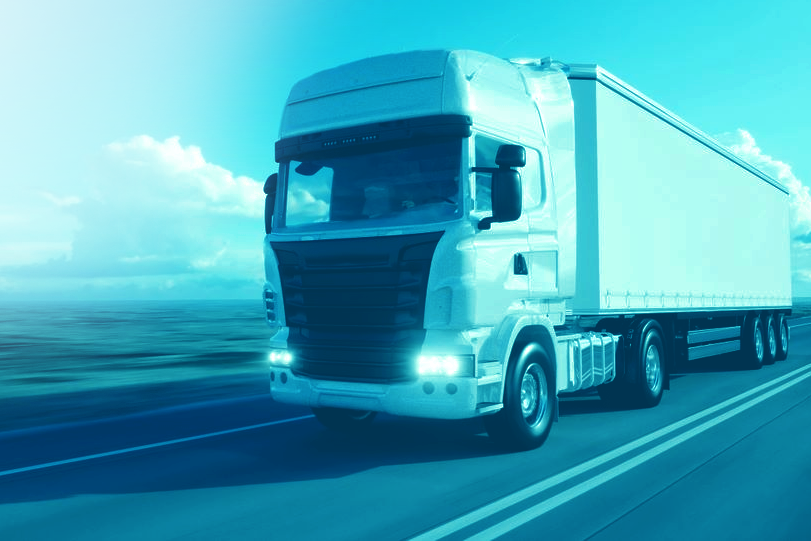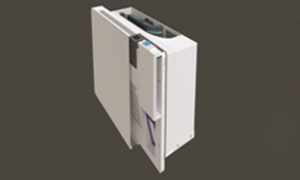Industry leaders and experts talk about how the cold chain logistics in India is shaping up and the major hurdles faced by companies to keep pace with the global cold chain market.
Cold chain is basically a temperature-controlled storage and movement of temperature-sensitive products. There are different temperature ranges required for storage and shipment of different products. So variable cost of storage changes accordingly. The transportation of temperature sensitive products along a supply chain are through thermal and refrigerated packaging methods and the logistical planning to protect the integrity of the shipments.
Akash Agarwal, CEO & Director, Crystal Logistic Cool Chain Ltd, says, “In competition, a cold storage, which offers lowest possible rental and service price to its customers, may win the quotation. Lowest price can only be offered easily if one is utilising its cubic feet at maximum level and cubic feet can be maximised only by racking; and racking should be a combination of double deep, drive in, drive through racking.”
Moreover, a push back or pallet shuttle racking may also be used to automate your stacking (stock to dock time). From commercial rental storage perspective, if you are a cold storage owner or manager, remember that customers tend to pay more for their finished goods (FG) storage as compared to raw materials (RM). Storage and handling of FG demands more professionalism, as a little thermal shock or contamination may put strong negative impact on the product (texture of products might be changed in some cases).
Cold chain challenges
A cold chain involves constant refrigeration of the product from the time of its production, through its transportation, handling and storage, right up to delivery. National Cold Chain Development (NCCD), a Government of India department, closely monitors the development of the cold chain as well as provides guidance, training and incentives to the rapidly growing sector. However, Vikram Murthy, National President, ISHRAE, says that the penetration of cold stores and consequently the cold chain is abysmal compared to developed countries, including our nearest neighbour — China.
“The private sector must realise the large business opportunities of backward integration of cold stores and thereby rapidly raise the deployment of the India cold chain. Logistics suffers badly due to poor roads across India. Railway Wagon Cold Chain movement is also a driver that is underutilised,” Murthy adds. “As is evident, the cold chain has a long path of growth towards developing food security as well as farmer economic benefit. For a healthy economy, this must become the prerogative of the private sector simply because it needs investment, management and the ability to reinvest profits. I see the beginning of such intent by several existing and potential investors.”
Meanwhile, commenting on the importance of cold rooms, Stefano Soggia, CAREL, Application Manager, Refrigeration, says that the growing global trends in efficiency and IoT are quickly spreading in the food service market, too, affecting commercial and industrial cold room application. “Customer requirements increasingly concern reliability, food quality and energy saving aspects that can easily be addressed during the design or retrofit phase of cold room equipment by choosing from the high performance products and modern technologies already established on the market,” he adds.
Soggia , further, elaborates that cold rooms are essentially used for food storage, with the aim of preserving the quality and value of stored goods. “Constant and uniform cold distribution must be assured independently of changing working area conditions. The cooperation and continuous communication between an electronic expansion valve assembled on the evaporator and an inverter DC Technology condensing unit, allows the user to avoid the ON/OFF cycle and subsequent temperature “jumps” in the cold room, modulating the refrigerant flow on the evaporator and keeping the room temperature stable within a very narrow band.”
Cold chain logistics
Cold chain management is an important aspect of the supply chain. The cold chain logistics services help the industries maintain a continual stock of products from suppliers and distributors across varied locations. Commenting on the Indian logistics sector, Agarwal says, “The Indian logistics sector provides a livelihood to over 22 million people, which in the next couple of years is expected to grow significantly. Equipping the sector with the latest digital technologies and automation in operations would lead to a 10 per cent decrease in indirect logistics costs, placing India in good stead with countries like the US, China and Japan when it comes to both domestic as well as international trade.” The recent opening of new ports, further, promise a growing international trade setup for India, particularly, with high potential markets such as Iran and Afghanistan and other middle-eastern countries.
“An integrated logistics policy that removes hierarchies and interactions with multiple agencies, effective monitoring and a complete tech-driven approach can help India’s logistics sector leapfrog into becoming one of the most promising sectors of the Indian economy,” suggests Agarwal. He expects support from the government to reduce the logistics cost from 14 per cent currently to 10 per cent by 2022. “Such constructive steps, if taken frequently and with solid intention, leveraging the best of technology, can surely develop a strong, efficient logistics sector, empowering the Indian economy to achieve the goals it has set for itself,” adds Agarwal.
Pharmaceutical drugs and biologics logistics
Pharmaceutical drugs and biologics logistics covers the physical movement of pharmaceutical and biologic drugs from the manufacturer to the end-user. It includes the transportation, warehousing, inventory management and other logistics functions. The market consists of those pharmaceutical drugs and biologics logistics that are outsourced to logistics companies instead of handled in-house by the pharmaceutical companies.
Logistics deals with the procurement, planning, and implementation of process activities in the transportation of goods from one place to another. According to Agarwal, the pharmaceutical industry utilises logistics services to supply medicinal products to different end users. Pharmaceutical companies sometimes outsource their logistics services to third-party logistics service providers in order to focus on their core business activities such as marketing, production and research and development, to benefit from the cost savings achieved by the logistics companies that combine loads and to avoid the high investment needed in logistics facilities.
The global pharmaceutical drugs and biologics logistics market grew from $70.2 billion in 2013 to $79.9 billion in 2017 at a compound annual growth rate (CAGR) of 3.3 per cent. It is expected to grow from $79.9 billion in 2017 to $96.1 billion in 2021 at a CAGR of 4.7 per cent. Agarwal says, “The pharmaceutical and biologics logistics industry is increasingly adopting sea-based logistics owing to rising air freight rates while providing a clinically maintained environment to preserve the pharmaceutical and biologic products, and distribution chain cost-cutting measures to improve the earnings and performance of the companies.
Growth will result from increasing demand for drugs in general and in particular for temperature-sensitive biopharmaceutical products such as vaccines and blood plasma products. “The pharmaceutical drugs and biologics logistics market has benefitted from rising pharmaceutical sales. Governments across the globe are continuously establishing new healthcare reforms triggering the growth of the pharmaceutical market, and rising income levels and urbanisation in emerging economies also fuel its growth,” says Agarwal. “The advantages to pharmaceutical manufacturers of outsourcing to logistics service providers are another driver. Low cost and greater visibilities in the drug distribution chain are the main advantages of outsourcing logistics services and these are becoming an integral part of pharmaceutical companies’ business strategy.”
Factors affecting growth of cold chain logistics
Poor infrastructure for cold chain logistics, skills shortages in the industry, and unstable regulatory environments in emerging countries are some of the factors that could hinder the growth of cold chain logistics. The market may also be negatively affected by increased regulation on temperature-sensitive pharmaceutical products distribution. For example, the Drug Supply Chain Security Act in the US requires drug manufacturers to implement serialisations, traceability and data reporting to help secure the drug distribution chain and increase consumer safety. Agarwal feels that complying with greater regulation raises logistics costs and may make distribution of some products to some markets uneconomic.
Agarwal elaborates that the market can be segmented by type of service, mode of transport, type of pharmaceutical and therapeutic area. Non cold chain logistics segment was the larger segment in 2017, accounting for about 83 per cent of the market. This was mainly due to the fact that a majority of pharmaceutical drugs do not require temperature control and are shipped as general cargo.
Air transportation was the largest segment in 2017, accounting for about 71 per cent of the market. This was mainly due to the speed, reliability and efficiency in delivering high-value, time-sensitive, temperature-controlled cargo provided by air transportation. The pharmaceutical drugs segment was the largest segment in the pharmaceutical drugs and biologics logistics market in 2017 accounting for about 87 per cent of the market. This was mainly due to the relative affordability pharmaceutical drugs and earlier stage of development of the biologics industry.
Musculoskeletal was the largest segment in the pharmaceutical drugs and logistics market in 2017 accounting for 13.92 per cent of the market. The fastest-growing segments were cold-chain logistics, sea-transportation, and biologics. The pharmaceutical drugs and biologics logistics market in North America was the largest in the world in 2017, accounting for about 37.8 per cent of the total. This was mainly owing to the predominance of North America in the pharmaceutical drugs and biologics markets and the fact that the region has the least issues related to transportation of pharmaceutical products. The pharmaceutical drugs and biologics logistics market in Western Europe was the second largest in the world in 2017, accounting for 21 per cent of the total.
Speaking about the benefits of portable cold storage, Agarwal says, “Pharmaceutical logistics companies are also increasingly focusing on providing sea-based logistics services to reduce transportation costs for their customers. Wherein portable cold storage business is boon to this industry to provide them with ultimate solutions for lack of space, avoiding high investments, cost effective and quality assured containers.”
The penetration of cold stores and consequently the cold chain in India is abysmal compared to developed countries.
Vikram Murthy, National President, ISHRAE
Pharmaceutical logistics companies are increasingly focusing on providing sea-based logistics services to reduce transportation costs for their customers.
Akash Agarwal, CEO/Director, Crystal Logistic Cool Chain Ltd
Customer requirements increasingly concern reliability, food quality and energy saving aspects that can easily be addressed during the design phase of cold room equipment.
Stefano Soggia, CAREL Application Manager, Refrigeration
Cookie Consent
We use cookies to personalize your experience. By continuing to visit this website you agree to our Terms & Conditions, Privacy Policy and Cookie Policy.














